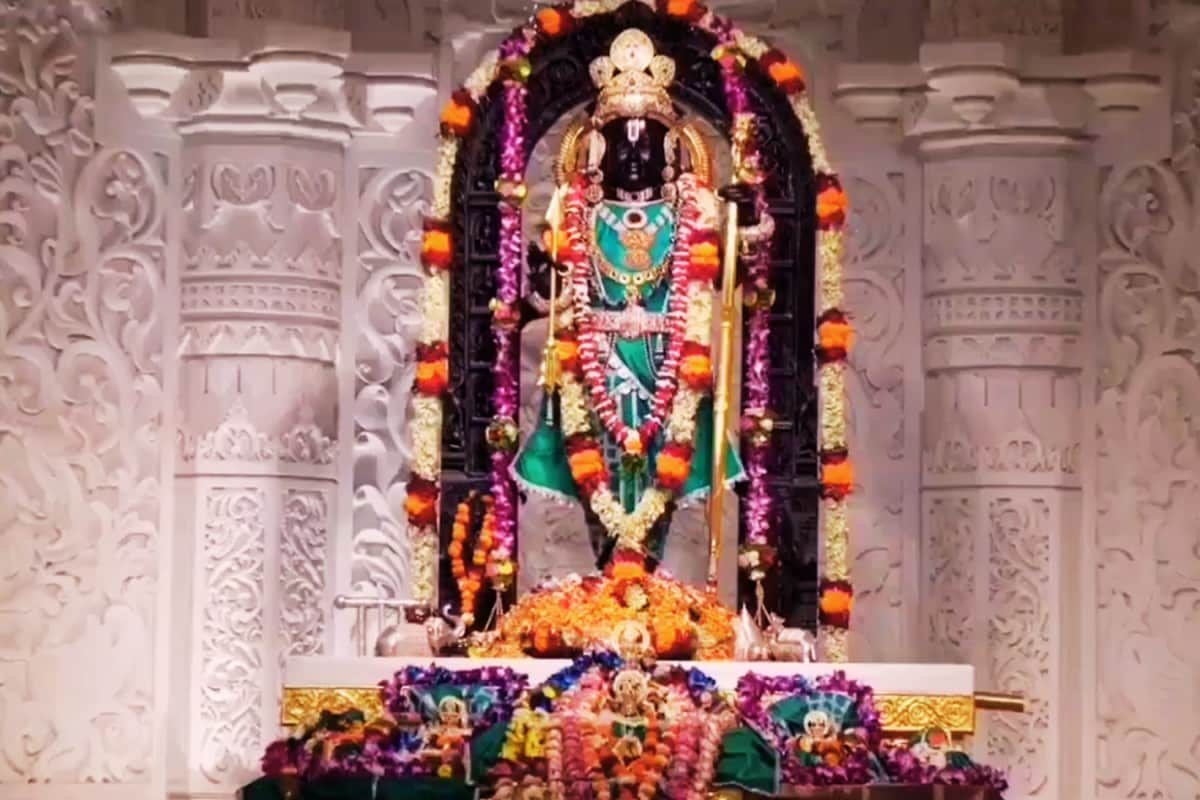

The Ayodhya Ram Temple is preparing to celebrate Shravana rituals for Ram Lalla with newly acquired gold swings, estimated to cost ₹12 crore. This addition is a testament to the ongoing enhancements and devotional contributions enriching the temple.
The Shravana month, significant in the Hindu calendar, sees deities placed on swings as part of the Jhulan Utsav. During this festival, temples are adorned, and the idols of gods and goddesses are placed on swings, often made of precious materials like gold and silver. The twin gold swings for Ram Lalla are a valuable addition, highlighting the grandeur of the celebrations at the Ayodhya temple.
Devotees have been contributing generously to the Ram Temple, reflecting deep spiritual commitment. The Shri Ram Janmabhoomi Teerth Kshetra Trust, responsible for the temple's construction and management, has received substantial donations. These funds are utilized for the temple's construction, ornamentation, and conducting various religious ceremonies. A recent donation included diamond crowns, gold, silver, and rubies from a Gujarat-based jeweler. Mukesh Patel, owner of Green Lab, donated 11 diamond-studded crowns, 30 kilograms of silver, 300 grams of gold and rubies to the temple trust. These items were transported to Ayodhya via a special chartered aircraft.
The temple has received ₹3,500 crore in donations and contributed ₹396 crore in taxes to the government over the past five years. Donations continue to pour in, with over ₹10 million collected monthly, especially after the 'Pran Pratishtha' ceremony. Non-Indian passport holders can also donate to the Ram Mandir.
The Ram Temple is expected to be completed by mid-2025, with the installation of Ram Darbar scheduled for June 5, 2025. The 'Pran Pratishtha' ceremony for Ram Darbar was conducted between June 3 and June 5, accompanied by Vedic rituals. The construction of the Ram temple will be completed by June 5, except for murals depicting the story of Lord Ram.
The temple is open to visitors, and the complete structure is expected to be visible by mid-2025. The best times to visit are from October to March for pleasant weather, April for Ram Navami celebrations, and October-November for Diwali.
The construction of the Ram Temple began on August 5, 2020, with Prime Minister Narendra Modi laying the foundation stone. The temple, built in the traditional Nagara style, is 380 ft long, 250 ft wide, and 161 ft high, featuring 392 pillars and 44 gates. A gold-plated 'Shikhara' has been installed on top of the Ram Temple ahead of the second 'Pran Pratishtha' ceremony.
The Ayodhya Ram Mandir stands as a symbol of devotion, faith, and unity. The addition of the ₹12-crore twin gold swings for Ram Lalla's Shravana rituals enhances the spiritual ambiance and grandeur of the temple, drawing devotees and visitors alike.